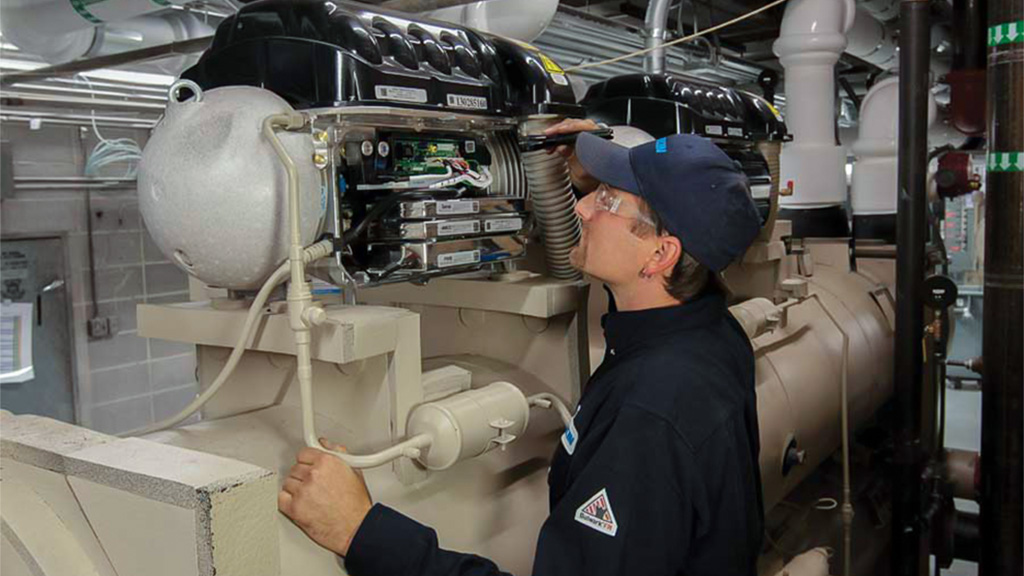There once was a time when the use of office space was predictable and consistent. No longer.
Rather than the Monday-to-Friday, nine–to-five routines, many businesses now embrace a hybrid of remote and in-person attendance. This leaves many spaces unused during the day while others are fully occupied.
Other things have changed as well. The interior comfort of commercial spaces has moved beyond just a heat or cool situation. The quality of air and the regulation of interior environments has now become a health and safety issue. Meanwhile, decarbonization of buildings is becoming a government priority.
How can building owners and their operations managers cope with these rapid changes while simultaneously moderating or even reducing their consumption of energy and carbon emissions? It sounds complicated.
But is it?
Most owners and managers of commercial space have become familiar with some of the advances in HVAC systems. New buildings under construction or being planned are taking the latest technologies into account. However, thousands of existing buildings aren’t changing that much or that quickly.
Owners may be reluctant to invest in an older building’s environmental controls due to cost, downtime during installation and fear that there is no financial payback. Only when mechanical systems break down, or when local decarbonization regulations like NYC’s Local Law 97 force change, do the newest interior environment controls come into consideration. A better understanding of the full economic picture surrounding the latest HVAC management is necessary.
According to experts in the field of PropTech, systems that sense, monitor and control the building’s interior using Artificial Intelligence, or AI, are the future.

A by the Lawrence Berkeley National Laboratory (LBNL) concluded, “Meeting aggressive decarbonization goals requires radical advancements that reduce existing buildings’ carbon footprint. New smart building technologies that offer continuous dynamic optimization of commercial Heating, Ventilation, and Air Conditioning (HVAC) control hold promise to advance building operations for decarbonization, efficiency and flexible control.”
LBNL conducted a two-year field study of a 12-storey, 300,000-square-foot building in Washington, DC, built in the mid-1960s. The structure had some building management systems already incorporated and therefore did not need a complete system upgrade.
The building experienced varied occupancy during the study period due to COVID. That gave Prescriptive Data’s cloud-based building operation platform, , the opportunity to learn how different occupancy conditions could affect its interior spaces.
“The platform used occupancy data, thermal modelling, and machine learning algorithms to implement optimal start-up, shutdown and intra-day fan speed adjustment to the air handling units (AHUs) for each floor during the pandemic.”
For example, using 22 occupancy counters, two per floor, it was able to adjust heat levels in areas where spaces were either empty or occupied, and make allowance for the heat coming off human bodies.
The technology reduced weekday AHU run times by over three hours and reduced fan speed by more than 10 per cent during lunchtime. Allowing adjustments in the heating and cooling systems reduced overall operating costs by six per cent. The latest iterations of the software can now adjust heating and cooling based on the availability of renewable energy, thereby reducing the building’s carbon footprint.
łŮ´ÇĚý “the building sector’s share of electricity use has grown dramatically in the past five decades, from 25 per cent of U.S. annual electricity consumption in the 1950s to 40 per cent in the early 1970s, to more than 76 per cent by 2012.”
For example, commercial cooling costs could be reduced by 78 per cent by using the most energy efficient walls, windows and latest HVAC equipment.
Aside from pure dollar savings, it should be remembered that occupants in healthy buildings, ie. those with efficient, properly adjusted HVAC systems, experience fewer sick days, professor Joseph Allen.
“When health is accounted for, the costs for enhancing the indoor environment can be properly weighed against the health and productivity benefits. This makes buildings, in essence, a human resource tool.”
John Bleasby is a Coldwater, Ont.-based freelance writer. Send comments and Climate and Construction column ideas to editor@dailycommercialnews.com.









Recent Comments
comments for this post are closed